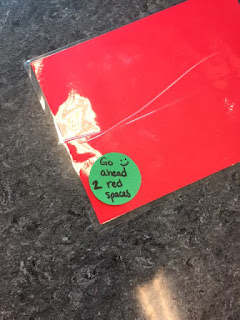At the start of every year I always set some sort of goal for myself and this year I find my goal area needs to be on mistakes. As teachers we always say "It's okay to make mistakes", "Mistakes mean we are trying" and "Mistakes are how we learn" but for me that's about as far as it went. So are we really saying mistakes are ok? Does this really encourage students to take more risks and to make mistakes?
This past school year I cam across the video below on how this teacher grades her tests. It is worth watching but if you don't have time here is a quick but "does no justice" recap: She highlights the mistakes that students make on their tests, no grade is put on the test, grades are put in their online grade book the day AFTER they have received the test back, and she celebrates her favorite mistakes. Students work together to recognize where they have made mistakes and work to correct them.
I just love the idea of only highlighting the mistakes made on the test. This way students are more focused on the learning and content rather than what grade they received. She said it perfectly when she talks about how students get their test back, look at the grade, and then throw it away never to look at it again. When this happens I feel we are saying that the material we taught really wasn't that important, and that the grade they received is acceptable, even when it may not be.
My most favorite part is how she celebrates mistakes. She displays a photocopy of a mistake that a student or many students made, and calls them her favorite mistakes. The class works in their groups and then together as a whole to identify the mistake that was made and then how to correct it. She also brings to the students attention parts that may be wrong by highlighting them, but she doesn't necessarily take points off for it.
I've been teaching for 10 years, this will be my 11th year, and this past year when students only focused on their grades it really started to get to me. I knew I needed to change something about how I was running my class. Standards Based Grading was something I brought into my room about 5 years ago and it helped get the kids to focus more on the learning but the level put at the top of the paper was still sparking the conversations I was hoping to eliminate.
So my goal for the 2017-2018 school year is to highlight mistakes, enter grades in the following day, celebrate my favorite mistakes, and hopefully get my students to focus more on the math and less on their grades. Wish me luck and we will see how this year goes!























